Chemistry > AQA Questions and Marking Scheme > AQA AS CHEMISTRY 7404/1 Paper 1 Inorganic and Physical Chemistry Question Paper + Mark scheme [MERGE (All)
AQA AS CHEMISTRY 7404/1 Paper 1 Inorganic and Physical Chemistry Question Paper + Mark scheme [MERGED] June 2022 *JUN227404101* IB/M/Jun22/E7 7404/1 For Examiner’s Use Question Mark 1 2
Document Content and Description Below
AQA AS CHEMISTRY 7404/1 Paper 1 Inorganic and Physical Chemistry Question Paper + Mark scheme [MERGED] June 2022 *JUN227404101* IB/M/Jun22/E7 7404/1 For Examiner’s Use Question Mark 1 2 ... 3 4 5 6 7 8 Section B TOTAL Time allowed: 1 hour 30 minutes Materials For this paper you must have: • the Periodic Table/Data Sheet, provided as an insert (enclosed) • a ruler with millimetre measurements • a scientific calculator, which you are expected to use where appropriate. Instructions • Use black ink or black ball-point pen. • Fill in the boxes at the top of this page. • Answer all questions. • You must answer the questions in the spaces provided. Do not write outside the box around each page or on blank pages. • If you need extra space for your answer(s), use the lined pages at the end of this book. Write the question number against your answer(s). • All working must be shown. • Do all rough work in this book. Cross through any work you do not want to be marked. Information • The marks for questions are shown in brackets. • The maximum mark for this paper is 80. Advice You are advised to spend about 65 minutes on Section A and 25 minutes on Section B. Please write clearly in block capitals. Centre number Candidate number Surname Forename(s) Candidate signature I declare this is my own work. AS CHEMISTRY Paper 1 Inorganic and Physical Chemistry 2 *02* IB/M/Jun22/7404/1 Do not write outside the Section A box Answer all questions in this section. 0 1 This question is about ionisation energies of Group 2 elements. 0 1 . 1 Explain why the first ionisation energy of the Group 2 elements decreases down the group. [2 marks] 0 1 . 2 Give an equation, including state symbols, to represent the process that occurs when the third ionisation energy of magnesium is measured. [1 mark] 0 1 . 3 Explain why the third ionisation energy of magnesium is much higher than the second ionisation energy of magnesium. [2 marks] 5 3 *03* Turn over ► IB/M/Jun22/7404/1 Do not write outside the box 0 2 This question is about acid–base titrations. Citric acid reacts with sodium hydroxide. C6H8O7(aq) + 3NaOH(aq) → Na3C6H5O7(aq) + 3H2O(l) 0 2 . 1 A student makes a solution of citric acid by dissolving some solid citric acid in water. Describe a method to add an accurately known mass of solid to a beaker to make a solution. [2 marks] 0 2 . 2 The student dissolves 0.834 g of citric acid in water and makes the solution up to 500 cm3 Calculate the concentration, in mol dm–3, of citric acid in this solution. [3 marks] Concentration mol dm–3 4 *04* IB/M/Jun22/7404/1 Do not write outside the box 0 2 . 3 The student uses this method to complete a titration. • Rinse a burette with distilled water. • Fill the burette with sodium hydroxide solution. • Use a measuring cylinder to transfer 25 cm3 of the citric acid solution into a conical flask. • Add 5 cm3 of indicator. • Slowly add the sodium hydroxide solution from the burette into the conical flask. • Add the sodium hydroxide solution dropwise near the end point until the indicator just changes colour. • Repeat the titration to get concordant results. The method used by the student includes three practical steps that will lead to an inaccurate final result. For each of these three steps • identify the mistake • explain why it is a mistake • suggest how the mistake can be overcome. [6 marks] 5 *05* Turn over ► IB/M/Jun22/7404/1 Do not write outside the box 6 *06* IB/M/Jun22/7404/1 Do not write outside the box 0 2 . 4 Table 1 shows the student’s burette readings after the mistakes in the practical procedure have been corrected. Table 1 Rough Run 1 Run 2 Run 3 Final reading / cm3 23.65 22.95 46.05 26.30 Start reading / cm3 0.00 0.00 22.95 3.40 Titre / cm3 23.65 Complete Table 1. Use the data in Table 1 to calculate the mean titre. [2 marks] Mean titre cm3 0 2 . 5 The total uncertainty in the use of the burette is ±0.15 cm3 Calculate the percentage uncertainty in the use of the burette in Run 1. [1 mark] Percentage uncertainty 14 7 *07* Turn over ► IB/M/Jun22/7404/1 Do not write outside the box 0 3 This question is about shapes of molecules. Complete Table 2 by drawing the shapes of both the AsF5 and KrF2 molecules, showing all lone pairs of electrons that influence the shape. Deduce the bond angle(s) in AsF5 [3 marks] Table 2 AsF5 KrF2 Diagram of shape Bond angle(s) Turn over for the next question 3 8 *08* IB/M/Jun22/7404/1 Do not write outside the box 0 4 This question is about intermolecular forces. 0 4 . 1 Complete the diagram to show how one molecule of ammonia can form a hydrogen bond with one molecule of ethanol. Include all lone pairs of electrons and partial charges on atoms involved in the hydrogen bond. [3 marks] Table 3 shows the electronegativity values of atoms of some elements. Table 3 Atom H C N O Br Electronegativity 2.1 2.5 3.0 3.5 2.8 0 4 . 2 Define the term electronegativity. [1 mark] 0 4 . 3 Deduce the two atoms from Table 3 that will form the most polar bond. [1 mark] 9 *09* Turn over ► IB/M/Jun22/7404/1 Do not write outside the box 0 4 . 4 The C–Br bond is polar. Explain why CBr4 is not a polar molecule. [2 marks] 0 4 . 5 Suggest, in terms of the intermolecular forces for each compound, why CBr4 has a higher boiling point than CHBr3 [3 marks] Turn over for the next question 10 10 *10* IB/M/Jun22/7404/1 Do not write outside the 0 5 A sample of antimony is analysed in a time of flight (TOF) mass spectrometer box and is found to contain two isotopes,121Sb and 123Sb After electron impact ionisation, all of the ions are accelerated to the same kinetic energy (KE) and then travel through a flight tube that is 1.05 m long. A 121Sb+ ion takes 5.93 × 10–4 s to travel through the flight tube. The kinetic energy of an ion is given by the equation KE = 1 2 mv2 KE = kinetic energy / J m = mass / kg v = speed / m s–1 Calculate the mass, in kg, of one 121Sb+ ion. Calculate the time taken for a 123Sb+ ion to travel through the same flight tube. The Avogadro constant, L = 6.022 × 1023 mol–1 [5 marks] Mass of one 121Sb+ ion kg Time taken by a 123Sb+ ion s 5 11 *11* Turn over ► IB/M/Jun22/7404/1 Do not write outside the 0 6 box Iodide ions can be oxidised to iodine using oxidising agents such as iodate(V) ions (IO3 –) and concentrated sulfuric acid. 0 6 . 1 State, in terms of electrons, the meaning of the term oxidising agent. [1 mark] In acidic solution, IO3 – ions oxidise iodide ions to iodine. IO3 – + 5 I – + 6H+ → 3 I2 + 3H2O 0 6 . 2 Give a half-equation for the oxidation of iodide ions to iodine. Deduce the half-equation to show the reduction process in this reaction. [2 marks] Oxidation half-equation Reduction half-equation 0 6 . 3 When iodide ions are oxidised using concentrated sulfuric acid, sulfur dioxide, a yellow solid and a foul-smelling gas are all formed. Give an equation to show the reaction between iodide ions and concentrated sulfuric acid to form the yellow solid. Identify the foul-smelling gas. [2 marks] Equation Identity of foul-smelling gas 5 12 *12* IB/M/Jun22/7404/1 Do not write outside the box 0 7 This question is about gaseous equilibria. Figure 1 shows the effect of pressure on the percentage yield of a reaction at equilibrium at two different temperatures. Figure 1 0 7 . 1 Explain how Figure 1 shows that the forward reaction in this equilibrium is exothermic. [2 marks] 13 *13* Turn over ► IB/M/Jun22/7404/1 Do not write outside the box 0 7 . 2 State whether the forward reaction in this equilibrium results in an increase, decrease or no change in the amount, in moles, of gas. Explain your answer. [3 marks] Tick () one box. increase decrease no change Explanation 0 7 . 3 Explain why using a catalyst has no effect on the percentage yield. [1 mark] Question 7 continues on the next page 14 *14* IB/M/Jun22/7404/1 Do not write outside the Hydrogen and nitrogen react to form ammonia. box 3H2(g) + N2(g) ⇌ 2NH3(g) At 745 K, the equilibrium constant, Kc = 0.118 mol–2 dm6 0 7 . 4 At 745 K, 0.150 dm3 of an equilibrium mixture contains 0.0285 mol of hydrogen and 0.0870 mol of nitrogen. Calculate the amount, in moles, of ammonia present in this equilibrium mixture. [5 marks] Amount of ammonia mol 0 7 . 5 Calculate the value, at 745 K, for the equilibrium constant Kc for this dissociation of ammonia to give hydrogen and nitrogen. State the units. 2NH3(g) ⇌ 3H2(g) + N2(g) [2 marks] Value Units 13 15 *15* Turn over ► IB/M/Jun22/7404/1 Do not write outside the Turn over for the next question box DO NOT WRITE ON THIS PAGE ANSWER IN THE SPACES [Show More]
Last updated: 10 months ago
Preview 1 out of 53 pages
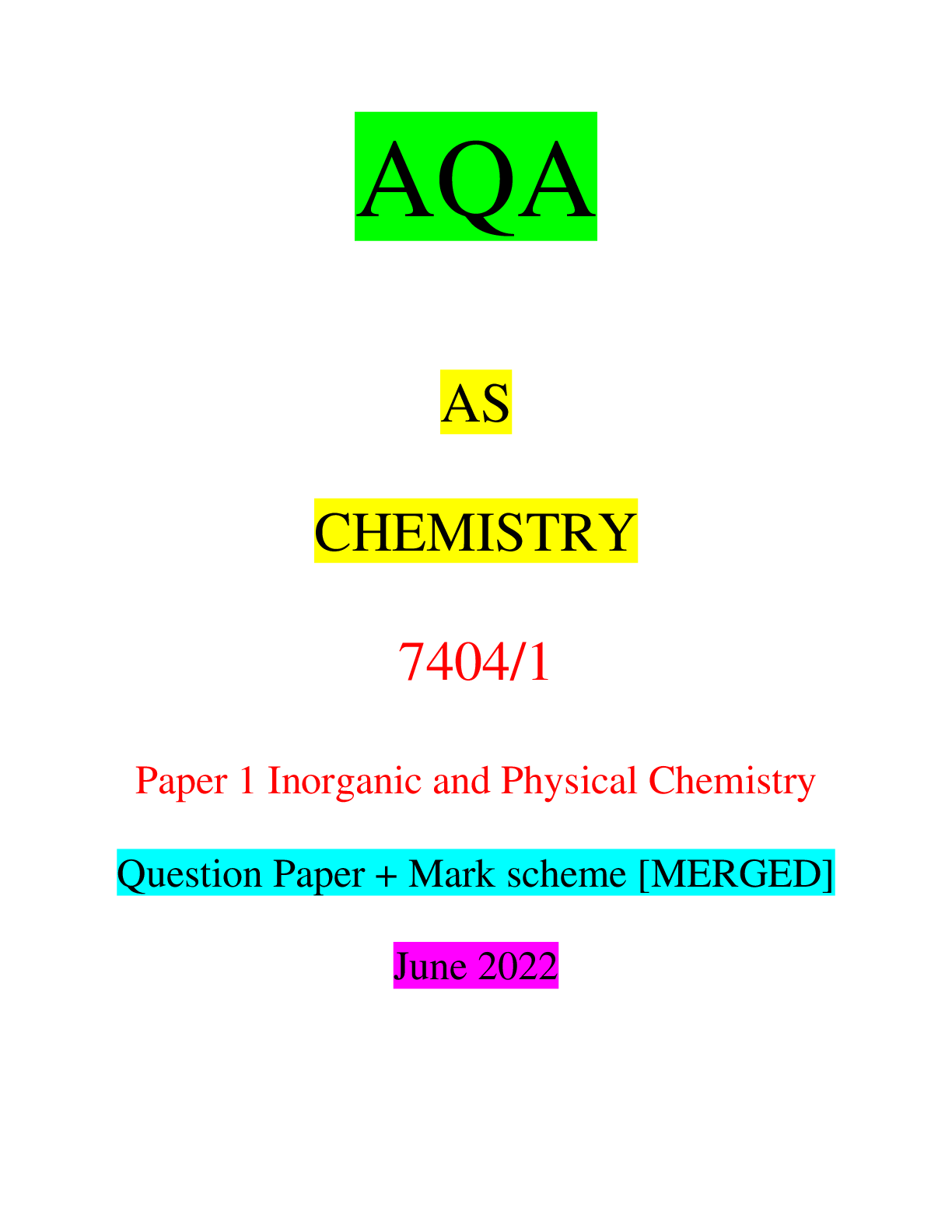
Reviews( 0 )
Document information
Connected school, study & course
About the document
Uploaded On
Jun 03, 2023
Number of pages
53
Written in
Additional information
This document has been written for:
Uploaded
Jun 03, 2023
Downloads
0
Views
151


.png)
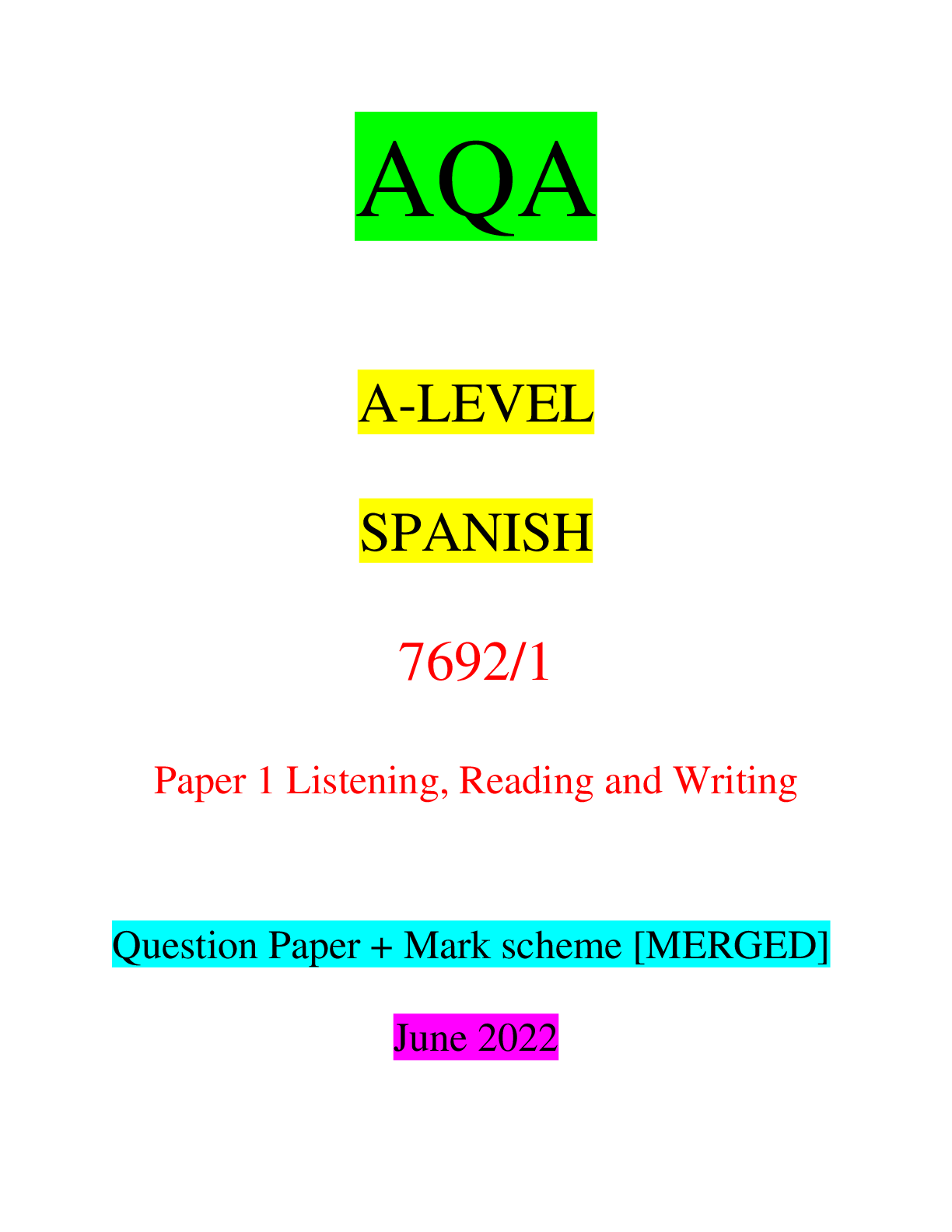
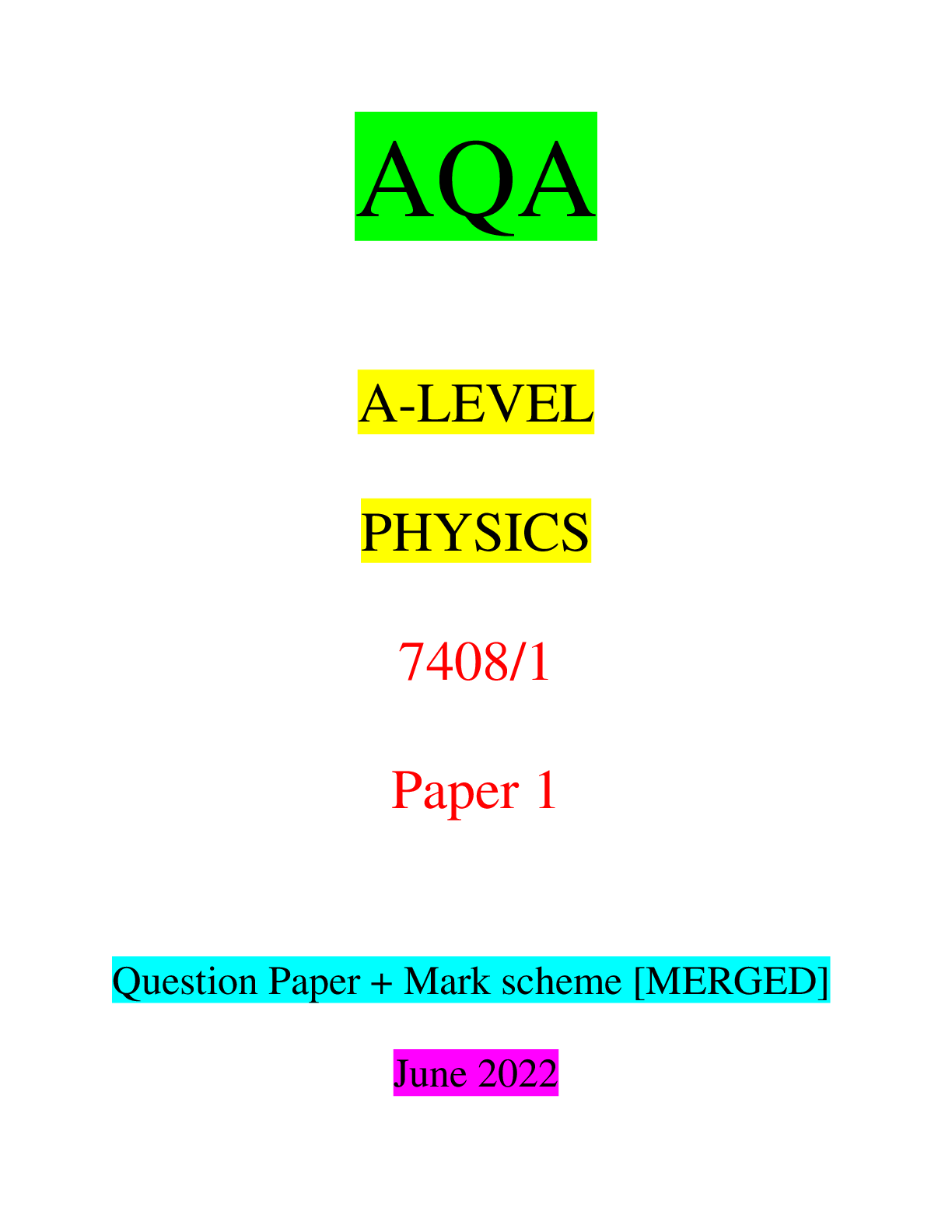
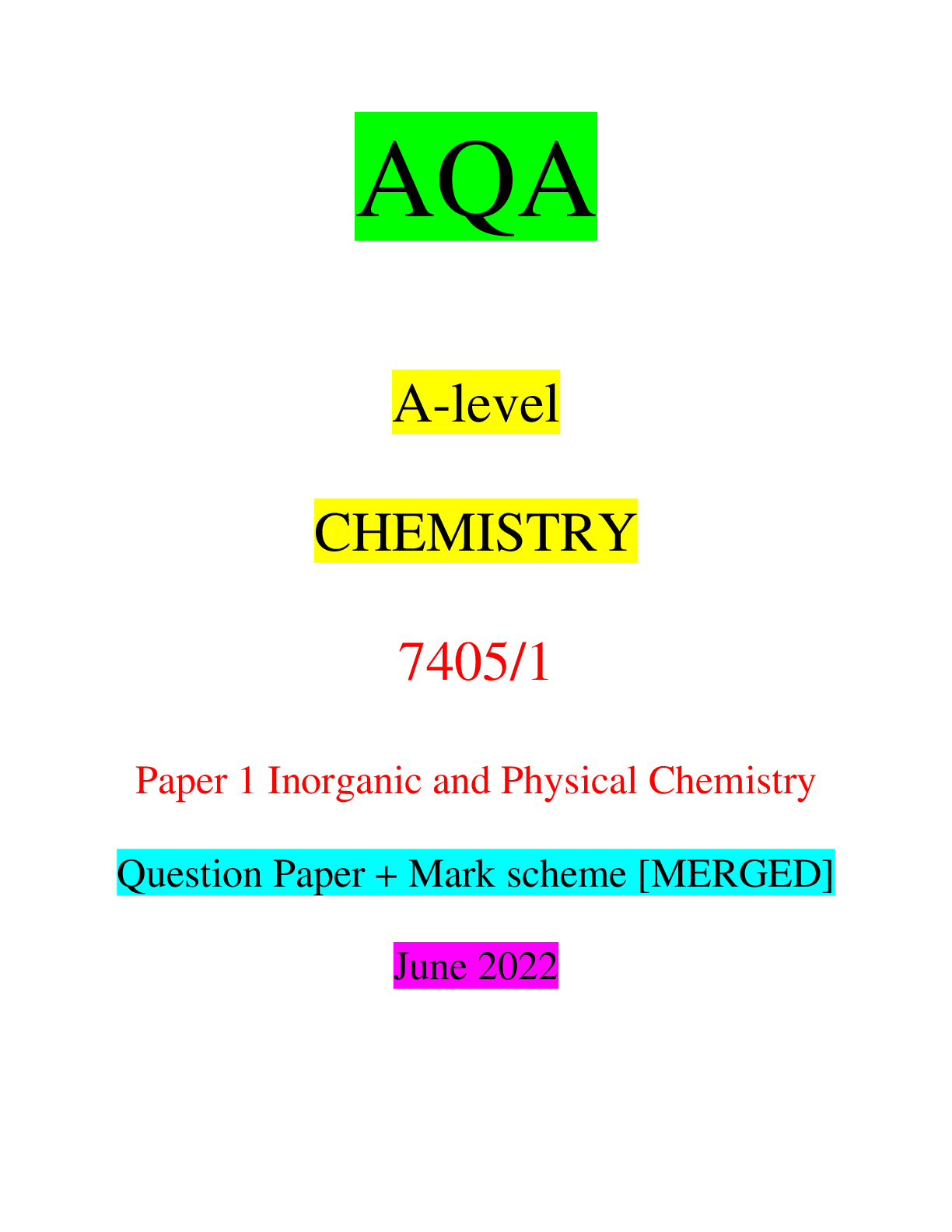


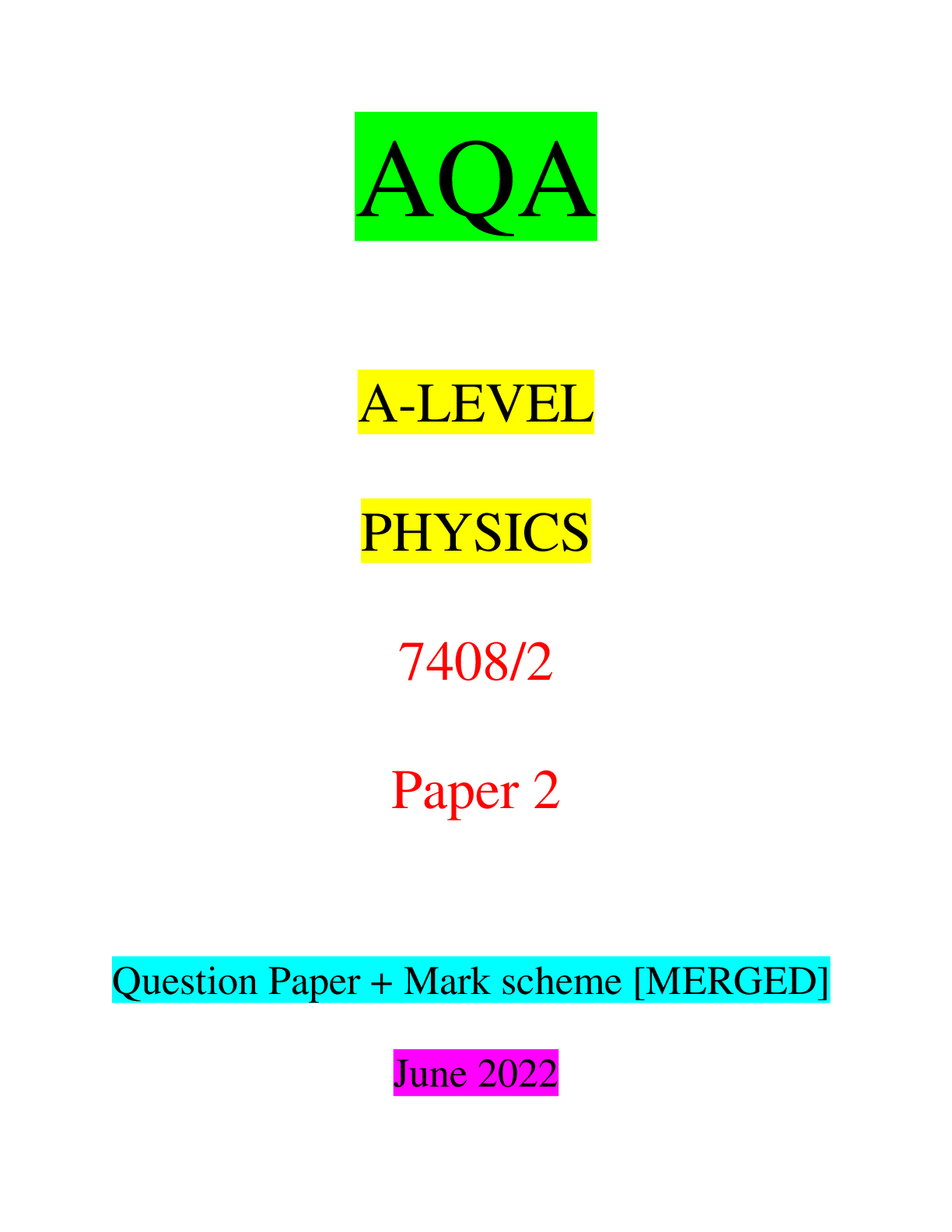
.png)
.png)
.png)
.png)
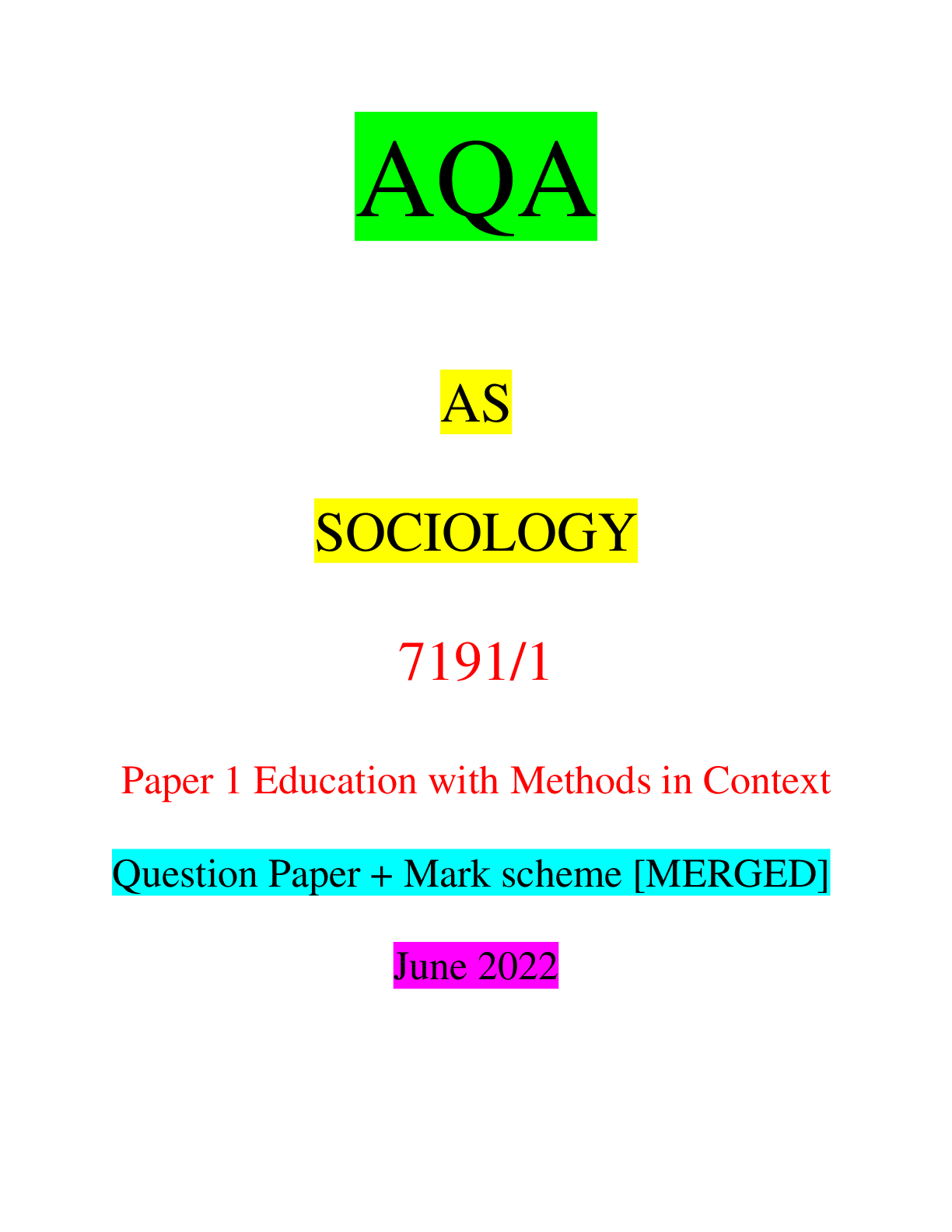
.png)
 (1) (1).png)
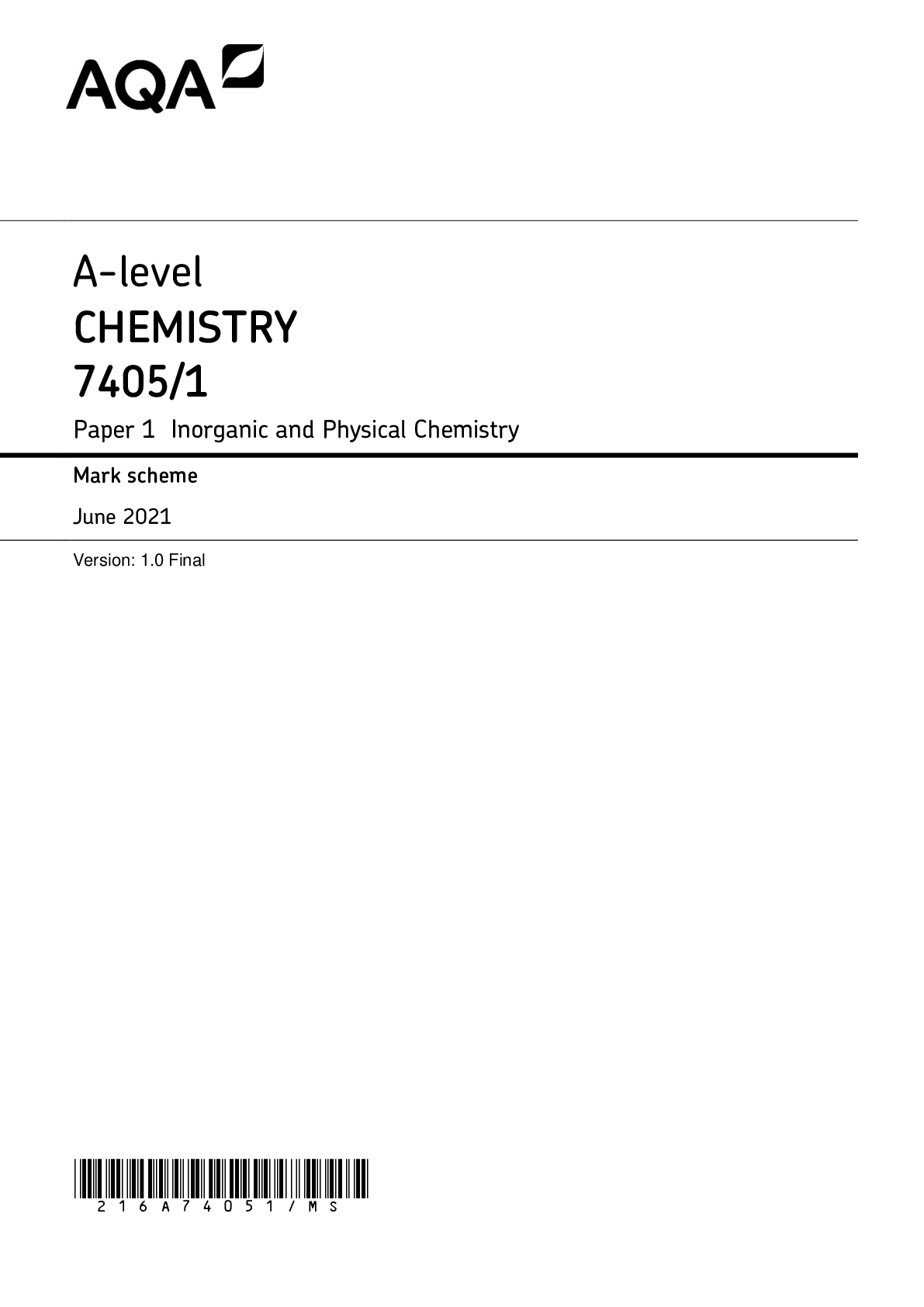

.png)
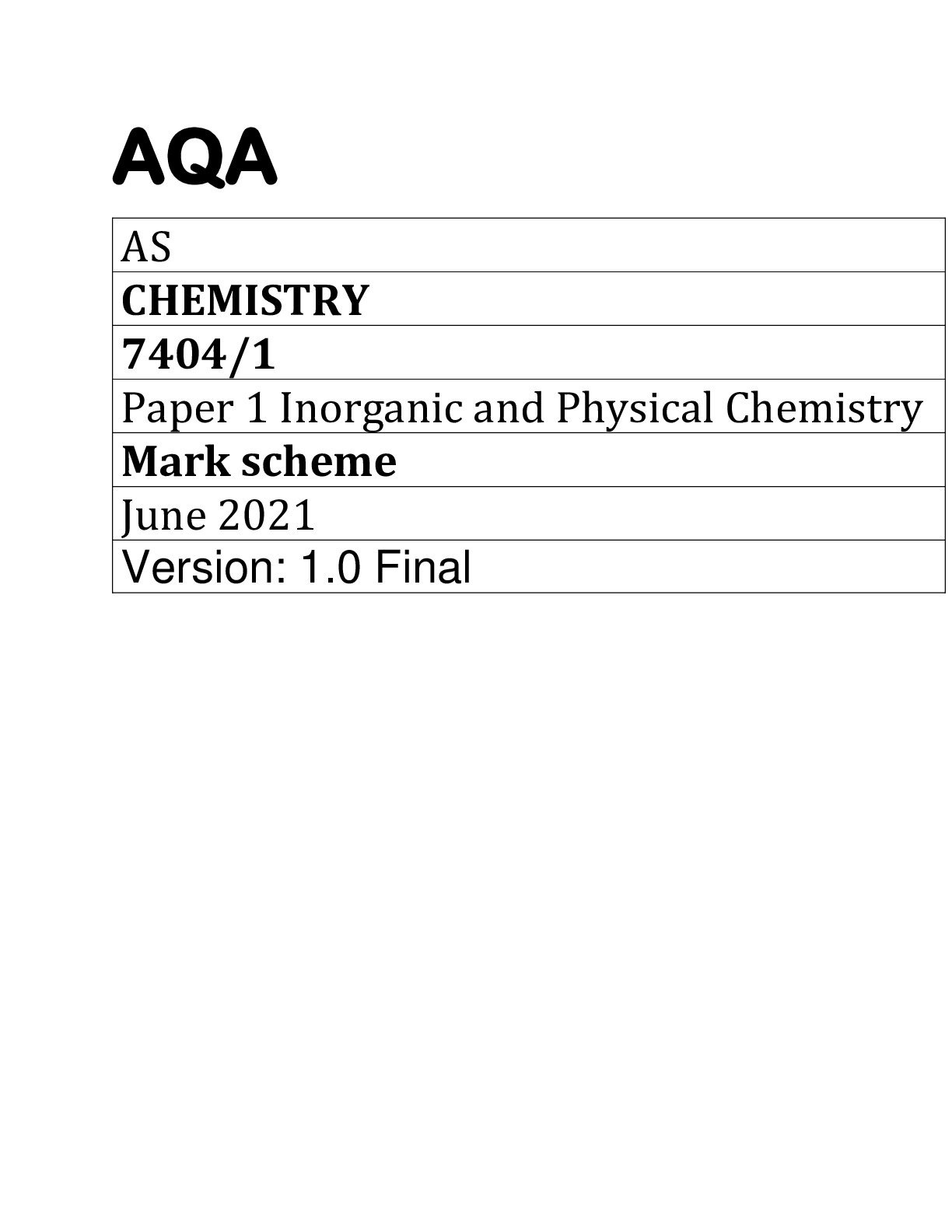
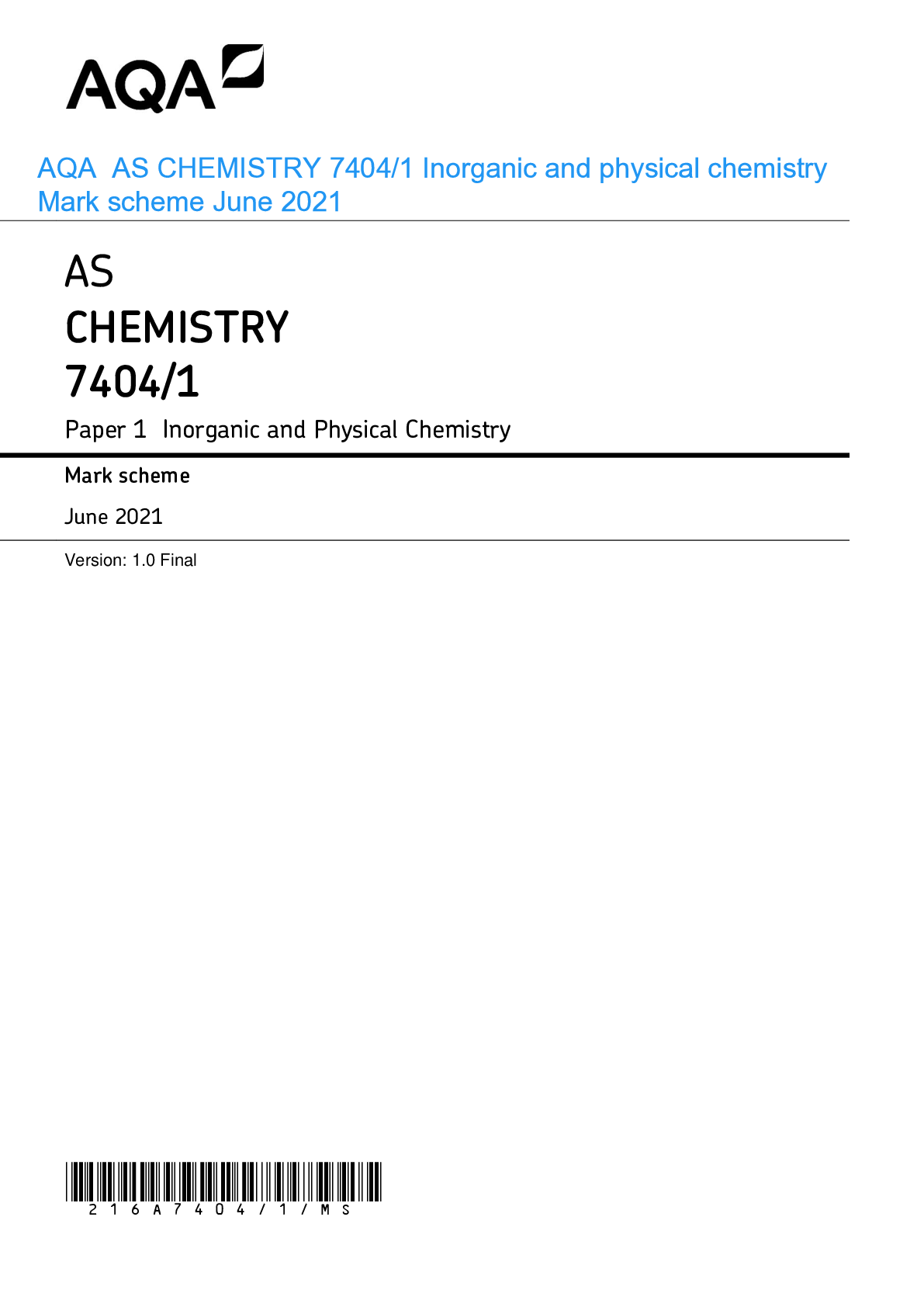
.png)
.png)
.png)
.png)
.png)
.png)
.png)

